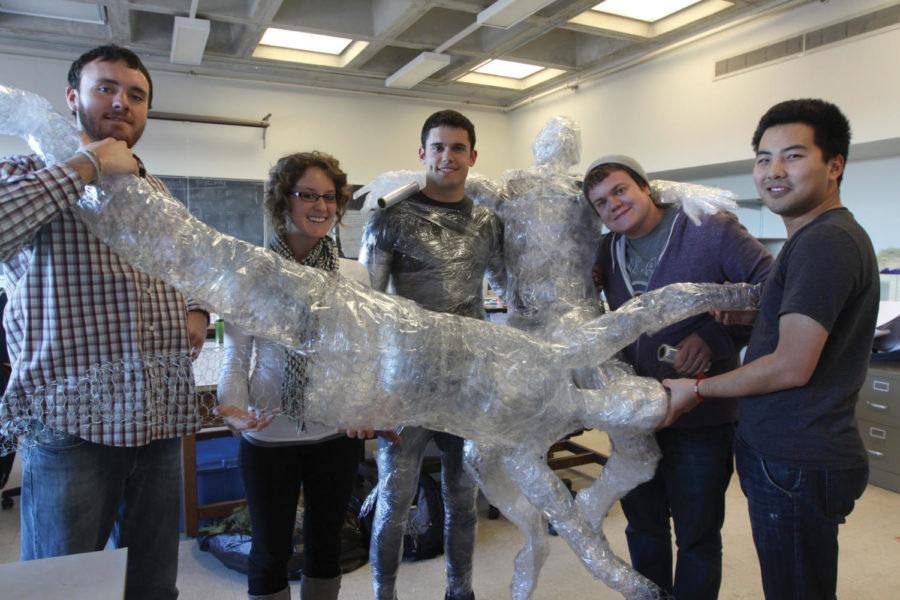Landscape architecture ranks 10th in nation
Photo:Huiling Wu/Iowa State Daily
A group of landscape architecture sudents work on their exhibit Tuesday at the College of Design. Their artwork will be displayed this week.
September 16, 2012
Iowa State’s landscape architecture program recently ranked 10th in the nation among more than 60 landscape programs.
This honor was given to Iowa State in recognition of the success of job placement after graduation and the general success of the alumni who graduated with a degree in landscape architecture.
“I would say that one of the biggest reasons our students succeed is because of our professors here,” said Malinda Cooper, academic adviser for design. “It’s up to them to shape the landscape architects for the workspace and to get them ready for life after graduation.”
After they graduate, many students with this degree will work for smaller firms that may then be contracted by larger companies to design for them. The companies, which can range from hospitals to restaurants to stores, act as clients for the firms.
Landscape architects will have a wide range of jobs available to them after they graduate, including parks and recreation, urban design, site planning, and environmental restoration. They work with the outdoors and planning new or restoring old areas.
A notable piece of landscape architecture is the Madison Square Garden in New York City. Landscape architects design a landscape using plants, flowers, and other modifications or additions to a piece of land.
“We really have some great students come through here,” said Douglas Johnston, professor of landscape architecture. “A lot of the praise from this ranking goes to them.”
Students are accepted into the landscape architecture program after going through the core design program as first-year students. From there, students will have hands-on projects with real-world applications, such as building landscapes for areas on Iowa State’s campus. Projects can take anywhere from a week to the entire semester.
The students in the program have an 85- to 90-percent placement rate, which is a stand-out in today’s economy. “[Iowa State] has what the students need to get them going in the world … to make them successful,” Cooper said. “It’s great what these students can accomplish.”







